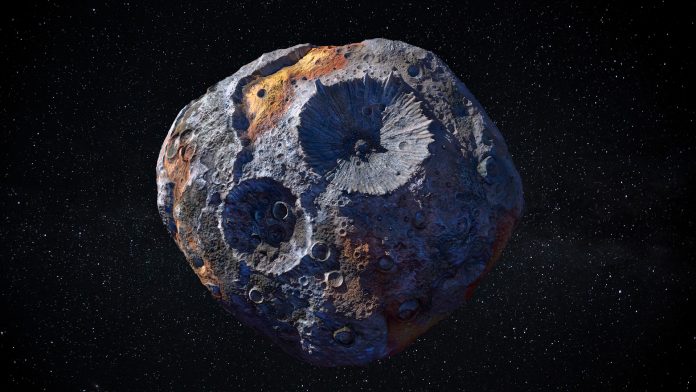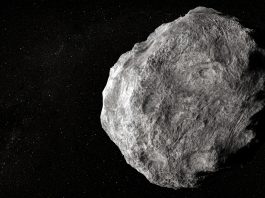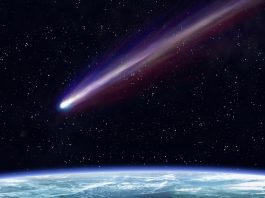A University of Arizona led study has indicated that the origins of the metallic asteroid 16 Psyche may be more enigmatic than once thought.
Asteroid 16 Psyche has been thoroughly analysed over the last few decades, with scientists hypothesising that it is the exposed iron core remanence of a planet from the early solar system that failed to materialise. However, new research indicates that may not be the case, with the celestial body believed not to be as dense or metallic as once thought.
The research paper is published in The Planetary Science Journal.
Discovered in 1852 by Italian astronomer Annibale de Gasparis, the asteroid 16 Psyche was the 16th asteroid discovered in history and is roughly the size of Massachusetts, containing an estimated 1% of the asteroid belt. Its rich iron composition has given it an estimated value of $10,000 quadrillion – astronomical worth that could potentially be devalued with these new findings.
Previous research has suggested that the asteroid 16 Psyche was comprised of 95% metal and exceptionally dense. However, this novel study estimates that it is instead made up of 82.5% metal, 7% low-iron pyroxene, and 10.5% carbonaceous chondrite – supplied from the impacts of other asteroids, with its bulk density – the empty space inside the asteroid being around 35%.
David Cantillo, the lead author of the study from the University of Arizona, said: “That drop in metallic content and bulk density is interesting because it shows that 16 Psyche is more modified than previously thought.”
The study signifies that the asteroid may be more akin to a rubble pile instead of the exposed core of a planet – this has been observed before in asteroid Bennu. A sample from Bennu has been attained by NASA’s OSIRIS-REx mission, led by the University of Arizona and is heading back to Earth.
Cantillo said: “Psyche as a rubble pile would be very unexpected, but our data continues to show low-density estimates despite its high metallic content. Having a lower metallic content than once thought means that the asteroid could have been exposed to collisions with asteroids containing the more common carbonaceous chondrites, which deposited a surface layer that we are observing. This is the first paper to set some specific constraints on its surface content. Earlier estimates were a good start, but this refines those numbers a bit more.”
Bennu is made up of copious quantities of carbonaceous chondrite material, giving it a porosity that exceeds 50% – characteristic of a rubbish pile. Because of its diminutive size as a low-mass object – only roughly as large as the Empire State Building, a porosity of this nature is expected due to its weak gravitational (missing word here?); however, for asteroid 16 Psyche, being so porous is very unexpected.
“The opportunity to study an exposed core of a planetesimal is extremely rare, which is why they’re sending the spacecraft mission there, but our work shows that 16 Psyche is a lot more interesting than expected,” commented Cantillo.
Previous analysis of Psyche’s composition was carried out by examining the sunlight reflected by its surface; however, Cantillo’s approach instead constructed Psyche’s regolith – its rocky surface material – achieving this by combining an array of materials in a lab and examining them until they corresponded to the asteroids telescope observations. The team are now focusing their efforts to investigate if asteroid 16 Psyche’s carbonaceous surface material is rich in water, employing the use of ground-based telescopes, other asteroids, and spacecraft missions to do so.









